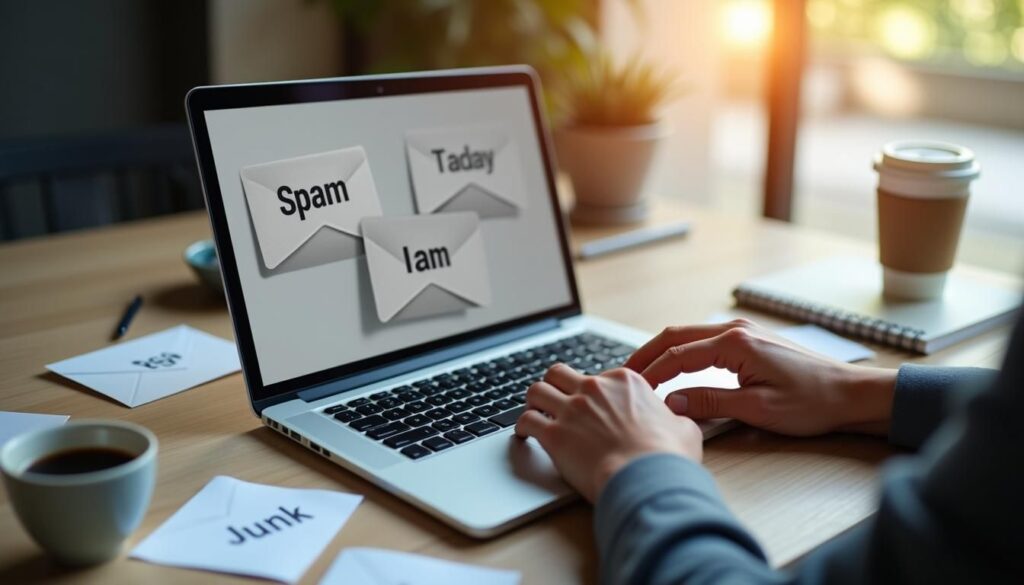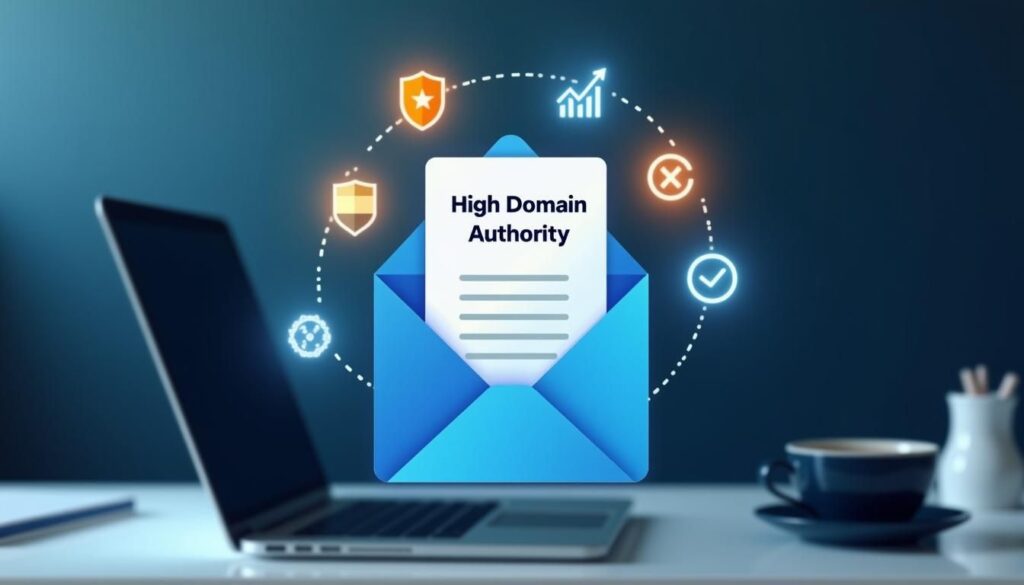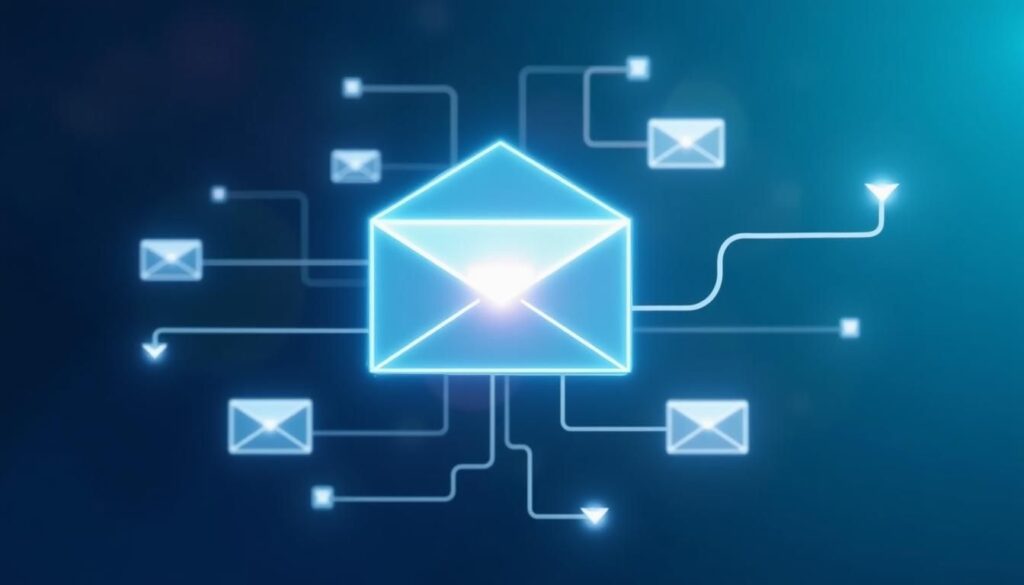
Key Takeaways
- Email still delivers an average ROI of roughly 36:1, making it one of the highest-return channels for B2B pipeline generation when executed correctly.
- Before sending a single campaign, sales teams should define goals, ICP, offer, and list-building rules so every email is tied directly to revenue outcomes.
- B2B email open rates commonly fall in the 25-35% range and cold email reply rates average around 5%, so success is about consistent volume, relevance, and optimization rather than one magic template.
- Protecting deliverability (separate domains, warm-up, clean data, DMARC/SPF/DKIM) is step one; without inbox placement, all copy and strategy work is wasted.
- Sequenced, multi-touch cadences that mix value-first content, social proof, and clear CTAs systematically outperform one-off blasts or generic newsletters.
- Automation, personalization, and testing are force-multipliers: teams that personalize and A/B test regularly see far higher engagement and ROI than those who "set and forget" campaigns.
Start With the Revenue Outcome (Not the Template)
If you sell B2B, email should be a core pipeline engine—not a side project. It consistently delivers exceptional efficiency, with research commonly citing about 36:1 return on spend, and buyers still prefer it as the primary way vendors should reach out. The opportunity is simple: when your process is disciplined, email becomes a predictable input to meetings, opportunities, and revenue.
Most teams struggle because they start in the wrong place: subject lines, sequences, and tools—before they can answer what email must produce. We recommend working backward from revenue: how many opportunities you need, what your meeting-to-opportunity conversion looks like, and what a realistic booked-meeting rate is for your market. That math forces clarity on volume, list size, and the number of touches you need to create consistent conversations.
This also keeps you out of the most expensive trap in outbound: optimizing for vanity metrics. Opens are useful diagnostics, but they are not the goal; replies, qualified meetings, and pipeline are. When we build programs at SalesHive, we treat email as a measurable revenue process inside an outbound sales agency motion, not as “marketing content” that lives in a vacuum.
Why Email Still Wins in B2B Buying Journeys
Email remains buyer-friendly because it’s asynchronous, searchable, and easy to forward internally—perfect for multi-stakeholder deals. In fact, about 77% of B2B buyers say email is their preferred way to hear from vendors, which means strong email execution isn’t optional if you want consistent prospect engagement. You can run great cold calling services, but if your email is weak, you’re forcing buyers into a channel they didn’t ask for.
Benchmarks also help you plan realistically instead of guessing. Across B2B, average open rates often cluster around the mid-30s, with a commonly cited midpoint near 36.7%. For genuinely cold outreach, averages tend to be lower—around 27.7% opens and 5.1% replies—so success comes from relevance, repeatable volume, and ongoing iteration, not one “perfect” email.
Use these numbers as planning baselines, then let your own data replace them over time. A well-run cold program may convert roughly 1% of contacted prospects into booked meetings, so small improvements in list quality or messaging have outsized impact. That’s why strong b2b sales agency teams treat email like a production line with QA, not a one-off campaign.
| Metric (B2B) | Planning Baseline |
|---|---|
| Average open rate (broad B2B benchmark) | ~36.7% |
| Cold outbound open rate | ~27.7% |
| Cold outbound reply rate | ~5.1% |
| Booked meetings from cold outbound | ~1% of contacted prospects |
Define Your ICP, Segments, and Offer Before You Build Anything
The fastest way to burn time—and domain reputation—is jumping into campaigns without a clear ICP and offer. If your list is random and your CTA is vague, you’ll irritate the wrong people, generate low-quality replies, and teach mailbox providers that your email isn’t wanted. The fix is straightforward: define who you’re for, what problem you solve, and why a meeting is worth the prospect’s time.
Segmentation beats clever copy almost every time, especially early in your program. Start with 2–4 priority slices based on firmographics (industry, size, geography), role/persona (economic buyer vs. champion), and triggers (hiring, funding, tool changes). With tighter segments, your proof points and examples feel “obviously relevant,” which is the real driver of replies.
Your offer should feel like help, not a pitch. A strong outbound CTA can still be a meeting, but it should be framed around a concrete outcome—an audit, benchmark, teardown, or a quick plan tied to the prospect’s role. This is where alignment matters across marketing email and SDR outreach: marketing nurtures interest over time, while SDR emails start one-to-one conversations that drive pipeline.
Build a Clean Prospect Database (List Quality Is the Fuel)
List building is where many programs quietly fail. Buying low-quality lists or skipping validation leads to bounces and complaints, which crush deliverability and can damage your brand with the exact accounts you want. Whether you use internal ops, b2b list building services, or a cold email agency partner, the standard is the same: accurate contact data, clear segmentation fields, and compliance-safe sourcing.
Treat list hygiene like an operating system, not a one-time task. Validate emails before they enter sequences, normalize company names and titles for consistent reporting, and enrich with the minimum data needed for relevance (industry, tech stack, recent news, hiring signals). If your bounce rate creeps above a healthy low-single-digit range, pause volume and fix the data before you “test new copy.”
This is also where your process should connect to your CRM from day one. If contacts, segments, and outcomes aren’t structured, you can’t learn what’s working or scale it. When teams ask us how to hire SDRs or build an outsourced sales team, we usually start by auditing the database first—because even great reps can’t outrun bad inputs.
If your emails aren’t reaching the primary inbox, everything else is theater—treat deliverability like a quota metric.
Protect Deliverability With the Right Infrastructure
Deliverability is step one because inbox placement is the gatekeeper for every other improvement you’ll make. Use separate outbound sending domains (not your primary corporate domain), authenticate properly with SPF, DKIM, and DMARC, and warm new inboxes gradually before scaling volume. This is the unglamorous work that keeps your program stable as you increase sends.
A common mistake is sending from the main domain without warm-up, then trying to “copywrite your way out” of spam placement later. If something goes wrong, you can impact executive communication, customer support, and transactional email—not just outbound. A disciplined outbound sales agency approach isolates risk, monitors reputation, and makes hygiene a weekly habit, not a quarterly cleanup.
Your tech stack doesn’t need to be complicated, but it must be connected. At minimum, you need a sending platform (ESP or sales engagement tool), a CRM to track pipeline, and a reliable data source—then add deliverability monitoring and enrichment as volume grows. If you’re evaluating sales outsourcing, ask whether the provider operates like a true sales development agency with deliverability ownership, not just a “send-more-emails” motion.
Write Sequences That Earn Replies (Think Cadences, Not Blasts)
Most B2B buyers won’t respond to the first touch, especially when the problem you solve is strategic and timing-dependent. That’s why high-performing teams design multi-touch cadences and measure performance at the sequence level, not by obsessing over one email. A good sequence mixes value-first messaging, role-specific proof, and a clear CTA that’s easy to say yes or no to.
Another common mistake is running one generic cadence for every persona and every funnel stage. CFOs, Sales Leaders, RevOps, and IT buyers evaluate different risks, so the same story won’t land the same way. Build separate outbound and nurture motions: cold sequences for net-new accounts, and shorter, intent-aware sequences for warm leads from webinars, demos, events, or LinkedIn outreach services.
The messaging discipline is simple: keep it specific, keep it credible, and keep it easy to respond. Use tight personalization that proves you chose them for a reason, then earn the meeting with relevant social proof and a practical next step. The goal isn’t to “win the deal” in the inbox; it’s to start a real conversation your team can convert.
Measure What Matters and Optimize Like a Growth Loop
A professional email process is a measurement system, not a creative writing exercise. Track sequence-level performance through to pipeline: replies, positive replies, meetings booked, opportunities created, and revenue influenced. Opens and clicks still matter as diagnostics, but if you optimize only for opens you’ll drift into clickbait subject lines that don’t create sales conversations.
Email also plays a central role in nurturing, not just outbound prospecting. Nearly 63% of B2B marketers say email is their most effective lead nurturing tactic, which is why your nurture motion should be just as operational as outbound. When your CRM shows engagement history (opens, clicks, replies, page views), AEs and SDRs can time follow-up better and prioritize the right accounts.
Testing and personalization are the highest-leverage knobs once your foundation is solid. Marketers using AI to personalize report over a 13% lift in click-through rates, and organizations that consistently personalize have been associated with nearly 260% higher ROI compared to those that rarely do. The winning model is human plus AI: define the narrative and guardrails with a strategist, then use automation to scale variants without losing quality.
Scaling the Program: Build In-House or Partner to Move Faster
Once you have ICP clarity, clean data, deliverability hygiene, and working sequences, scaling becomes a capacity question. Can your team consistently source and validate new contacts, maintain domain reputation, run tests monthly, and follow up on every response? If not, your constraint is operations, not ideas—and that’s when partnering with an sdr agency or sales agency can accelerate results.
At SalesHive, we built our model to remove the friction of standing up the full engine—list building, deliverability, sequencing, and appointment setting—so leaders can focus on closing and expanding accounts. Teams exploring an outsourced sales team often ask about saleshive pricing, saleshive reviews, and how to ramp quickly without long-term commitments; those are the right questions because consistency matters more than one big campaign. If you also need phones, pairing email with a cold calling agency approach (or b2b cold calling services) can improve connect rates and increase meetings per account.
Your next step should be practical: pick one ICP segment, implement the infrastructure, launch one outbound sequence and one nurture sequence, and measure results for a full cycle before you expand. When you’re ready to scale, decide whether to hire SDRs internally or outsource sales to a partner that can run the system end-to-end. If you want to explore how we do it, start at saleshive.com or check saleshive careers to see how we build and train teams that execute this process daily.
Sources
- Dyspatch (citing Litmus) – Email marketing statistics
- Forbes Advisor – Email marketing statistics
- Mailotrix – Email open rate statistics
- The Digital Bloom – B2B cold email benchmarks (2025)
- DBS Interactive – B2B marketing statistics and trends
- Powered by Search – B2B email marketing stats and benchmarks
📊 Key Statistics
Expert Insights
Start from revenue, not from templates
Before worrying about subject lines, map your email strategy to pipeline and revenue targets. Work backward: how many meetings and opportunities do you need, what reply and conversion rates are realistic, and therefore how many contacts and touches are required. This keeps your entire email process accountable to numbers, not vibes.
Treat deliverability like a quota metric
If your emails are not landing in the primary inbox, nothing else matters. SDR and marketing leaders should own domain reputation like they own quota: implement separate sending domains, DMARC/SPF/DKIM, warm-up, and aggressive list hygiene, and monitor bounce/complaint rates weekly.
Segmentation beats clever copy every time
Highly specific segments (industry, role, use case, trigger events) almost always outperform generic blasts, even with average copy. Start with a tight ICP and 2-4 priority segments, then tailor messaging, offers, and case studies to each slice instead of chasing a mythical one-size-fits-all template.
Think in sequences, not single emails
Most B2B buyers will not reply to your first touch, especially in complex sales. Design 6-10 touch cadences mixing value content, social proof, objections, and a clear CTA, and measure performance at the sequence level, not just individual sends.
Use human plus AI, not AI instead of humans
Generative AI is fantastic for drafting variants, testing angles, and scaling personalization, but it still needs human guardrails. Have reps or a strategist define the narrative, guardrails, and quality bar, then use AI to personalize at scale like SalesHive does with its eMod engine.
Common Mistakes to Avoid
Jumping into campaigns without a clear ICP and offer
When your list is random and your offer is fuzzy, you burn domains, annoy prospects, and fill your pipeline with junk conversations.
Instead: Define your ICP, core problems, and offers first, then build segmented lists and messaging around those specifics before sending anything.
Buying low-quality lists and skipping data validation
Purchased lists are usually outdated and non-permissioned, causing high bounce and complaint rates that destroy deliverability and hurt your brand.
Instead: Invest in targeted list building from reputable data sources, then run validation and enrichment before loading contacts into your sequences.
Sending from your primary corporate domain without warm-up
If something goes wrong, your main domain reputation tanks, hurting all company email, including customer support and executive communication.
Instead: Use lookalike sending domains and subdomains, warm them up gradually, and separate high-volume outbound from transactional email.
Optimizing only for opens instead of replies and meetings
Vanity metrics lead to clickbait subject lines that inflate opens but do not generate sales conversations or revenue.
Instead: Set KPIs around reply rates, positive responses, meetings booked, and opportunity creation, and evaluate campaigns against those numbers.
Running one generic cadence for every persona and stage
CFOs, sales leaders, and IT buyers care about different things, and cold prospects behave differently than warm leads from content or events.
Instead: Create separate sequences by persona and funnel stage, with tailored messaging, social proof, and CTAs that match their context.
Action Items
Define your email goals and KPIs tied to pipeline
Set clear numeric targets for meetings, opportunities, and revenue, then back into required sends, opens, replies, and meetings so your team knows what success looks like.
Stand up a clean, segmented prospect database
Use tools or partners to build an ICP-aligned list with accurate roles, companies, and contact details, then segment by industry, role, and intent to drive relevant messaging.
Set up your technical foundation and deliverability
Configure DMARC, SPF, and DKIM, create dedicated outbound domains, warm them up, and implement ongoing list hygiene and bounce monitoring before scaling sending volume.
Design at least two core cadences: cold outbound and warm nurture
Build 6-10 touch sequences for net-new prospects and separate shorter sequences for inbound leads or event attendees, each with clear CTAs and value at every touch.
Layer in personalization and testing from day one
Use AI-driven personalization or SDR research to add contextual openers and dynamically swap case studies, and A/B test subject lines, CTAs, and value props each month.
Integrate email activity with your CRM and sales process
Sync sends, opens, clicks, and replies into your CRM so AEs and SDRs can see engagement history, prioritize follow-up, and accurately attribute pipeline to email.
Partner with SalesHive
On the email side, SalesHive’s team handles everything from domain warm-up and deliverability to copywriting, sequencing, and multivariate testing. Their eMod AI engine personalizes emails at scale using company data, role context, and buying signals, so your outreach feels handcrafted without burning SDR hours on manual research. You can choose US-based or cost-efficient Philippines-based SDR teams (or a mix), and because SalesHive operates on flat, month-to-month pricing with risk-free onboarding, you can ramp up or down quickly as your pipeline needs change. For B2B teams that want pipeline growth without building a big internal SDR org, SalesHive is a proven shortcut from strategy to booked meetings.
❓ Frequently Asked Questions
Is email marketing still worth it for B2B sales in 2025?
Yes. Email continues to deliver some of the highest ROI of any channel, with studies showing returns around 36:1 and B2B buyers consistently ranking email as their preferred way to hear from vendors. It is especially powerful for complex, multi-stakeholder deals where prospects need time and information before talking to sales. For SDR and marketing teams, a solid email process is now table stakes, not a nice-to-have.
What is a realistic benchmark for cold B2B email performance?
For genuinely cold outreach into your ICP, expect roughly 20-30% opens, 4-6% total replies, and around 1% of total prospects converting to booked meetings once your program is dialed in. Some teams will do better with strong lists, offers, and deliverability, but using these as planning baselines keeps expectations grounded. The key is to measure consistently and improve list quality, relevance, and cadences over time.
How many emails should be in a B2B outbound sequence?
Most high-performing SDR teams run 6-10 email touches over 2-4 weeks for cold outbound, often combined with calls and LinkedIn. That gives you enough attempts to land in front of busy decision-makers without badgering them daily. A shorter, 3-5 email sequence is usually better for warm leads (webinars, demos, content downloads) since intent is already higher.
What tools do I need to start the email marketing process?
At minimum, you need a sending platform (ESP or sales engagement tool), a CRM to track contacts and pipeline, and a reliable data source for list building. As you scale, add deliverability tools (for domain warming and monitoring), enrichment and intent data, and analytics for cohort and sequence performance. Partnering with a provider like SalesHive lets you effectively rent this entire stack plus SDRs instead of assembling it in-house.
How important is personalization in B2B email outreach?
It is critical. Buyers are flooded with generic pitches and tune them out. Data shows brands that consistently personalize email see dramatically higher ROI and engagement, and B2B-specific studies highlight significant lifts in reply rates when subject lines and openers reference relevant context. In practice, that means segment-level relevance plus 1-2 sentences of tight, role-specific personalization rather than long, fluffy paragraphs.
How do I keep my domain and sender reputation healthy?
Use dedicated sending domains for outbound, warm them up slowly, keep bounce rates below about 3%, and avoid spammy tactics like purchased lists or misleading subject lines. Implement DMARC, SPF, and DKIM, monitor spam complaints, and routinely remove unengaged contacts. Think of domain reputation as a credit score for your email program: easy to damage, slower to repair, and absolutely worth protecting.
What is the difference between email marketing and SDR cold email?
Marketing email usually targets opted-in audiences with newsletters, product updates, and nurture flows, often focused on many-to-one communication. SDR cold email targets specific accounts and personas that may not know you yet, with the intent of starting one-to-one conversations and booking meetings. The process, rules, and risks are different, but the tech stack and many best practices overlap, so alignment between marketing and sales is crucial.
When should we consider outsourcing email outreach and SDR work?
If you lack internal bandwidth to build lists, maintain deliverability, write and test sequences, and follow up on every response, or if your reps are stuck doing prospecting instead of closing, outsourcing makes sense. Agencies like SalesHive provide full-stack SDR programs, combining list building, email and call outreach, and appointment setting on a month-to-month basis so you can scale outreach without hiring, training, and managing a large internal team.






